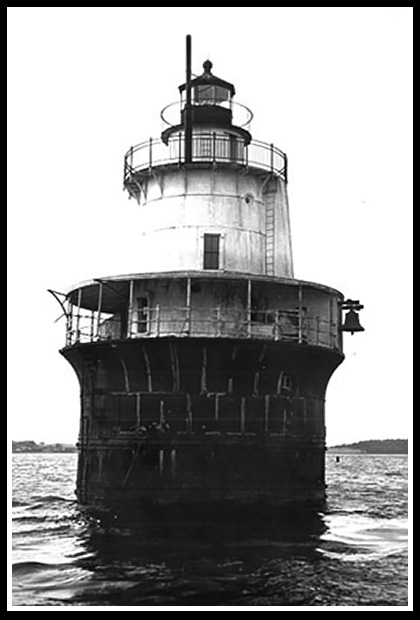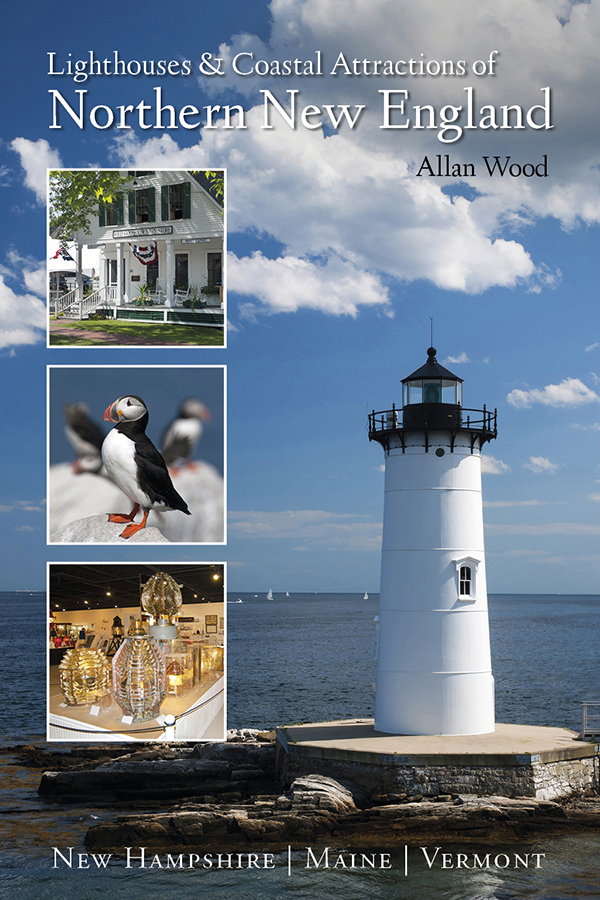Lubec Channel Lighthouse
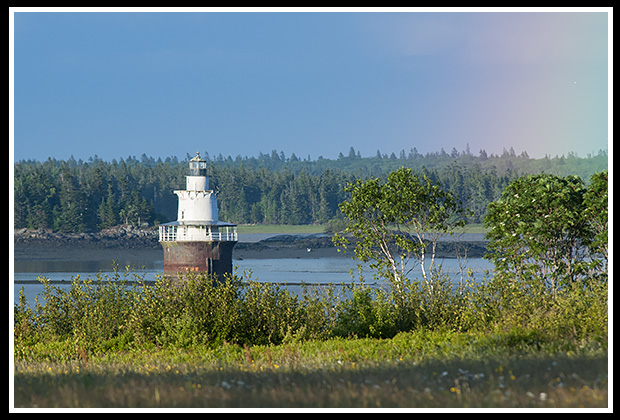
Lubec, Maine
Built in 1889
Location:
Lubec Channel Light lies about a mile offshore off Route 189. Best viewed by boat.
Latitude: 44° 50' 31" N
Longitude: 67° 58' 36" W
Historic Stories:
Lubec Channel Lighthouse was built in 1889 to accommodate the shipping within Lubec Channel from its 20 sardine packing plants and other fishing industries.
Its first keeper was Frederick W. Morong, and its last keeper was Earl Ashby in 1939.
The 53-foot spark plug designed tower had 5 levels, two of which were keepers’ living quarters. |
Early Lubec Channel Light |
Loring Myers was a steamboat captain who had lost his wife and three children to illness. He remarried and became keeper from 1898 to 1923. He also moonlighted as an entrepreneur and even owned a sardine plant. In 1904, the keeper was credited with inventing a special type of lifeboat, which was especially very buoyant and watertight, and could carry up to 15 people. It was highly praised but never made him any money as the more costly invention was not picked up by the steamship lines, who preferred the less expensive, and less safe lifeboats.
In 1939, the last assistant keeper, Nathaniel Alley, was found by the Captain of the Grand Manann ferry overcome by gas from a coal stove. He was taken to Lubec for medical attention but later died from the accident.
| In 1989, the lighthouse was going to be discontinued, but local residents were able to save the lighthouse by mounting a “Save the Sparkplug” campaign. | 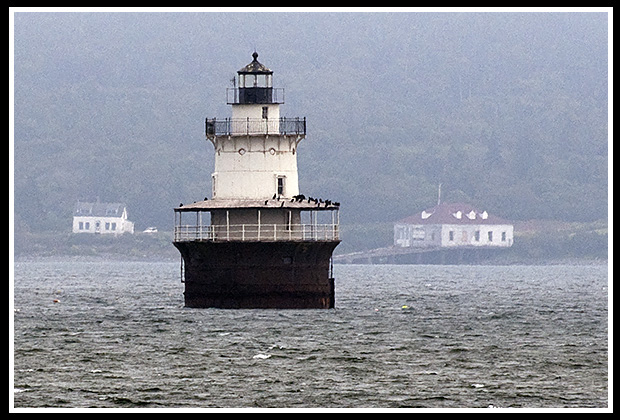
|
This involved handing out automobile spark plugs to everyone to help petition to keep the lighthouse.
The lighthouse had been setting at an angle for many years, and in 1992 as part of restoration efforts the base was rebuilt to straighten out the tower. The lighthouse was repainted in 2001, and today is privately owned.
Places to Visit Nearby:
Lubec is located on the banks of the St. Croix River near the United States and Canadian border. This former shipbuilding and sardine-packing town is the first town in the U.S. to see the sunrise. It has no shopping malls, fast food restaurants, of stoplights, only rugged natural beauty that hasn’t changed.

|
Lupine flowers are abundant everywhere in the early summer months. |
This is truly a place to disconnect and enjoy the outdoors. The community consists of artists, a few specialty shops, and fishermen.
| The lighthouse can be seen at a distance from various points along the shore and is best viewed by boat. | 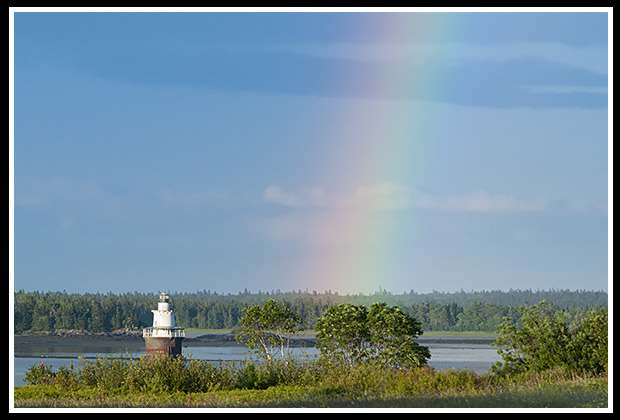 |
Visit the Lubec Historical Society to see the 1000-pound fog bell that was once used at Lubec Channel Light.
Take some time and hike through the Quoddy State Park's miles of nature trails, over scenic coastal terrain.
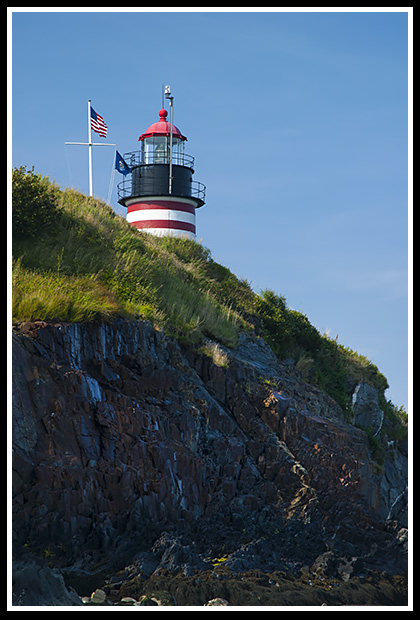
West Quoddy Head Light |
Many of these trails are used on what is known as the Quoddy Loop Trail System, which not only goes by West Quoddy Head Lighthouse, but also includes trails across the border onto Campobello Island in Canada. |
Lubec also offers three main conservation areas and preserves for hiking; the Boot Head Preserve, Hamilton Cove Preserve, and Western Head Preserve between Cutler and Lubec.
Directions for a Distant View:
-
To see the lighthouse from shore, From Highway 1 North in Whiting, continue east on Highway 189 for just under ten miles towards Lubec.
-
Before reaching Lubec, turn south on Boot Cove Road where you can get a distant view of the lighthouse out in the channel.
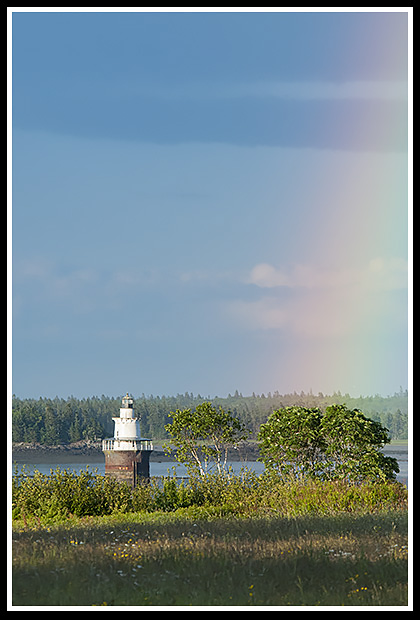
Contact Info:
United States Coast Guard SARDET Eastport
PO Box 280
Eastport, ME 04631
Local Boat Tour
Downeast Charter Boat Tours
Offers whale watching on a 25' Northern Bay lobster boat and may pass by the Lubec lighthouses.
31 Johnson Street Lubec, ME 04652
(207) 733-2009
Books to Explore
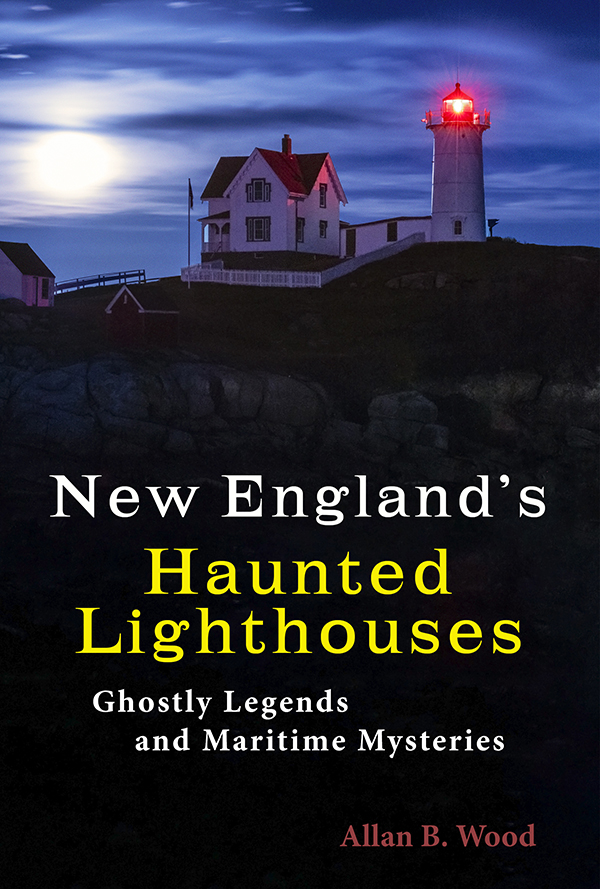
Available in paperback. |
New England's Haunted Lighthouses: Explore the historical mysteries surrounding the haunted lighthouses of New England! This image-rich book features ghost stories about spirits of devoted keepers who linger, victims of foul play or local shipwrecks, ghost ships, lost souls, and more, blending maritime history with the supernatural. Explore the tales linked with these iconic beacons! |
Lighthouses and Coastal Attractions of Northern New England: The lighthouse tourism book provides human interest stories from each of the 76 lighthouses in northern New England, along with plenty of coastal attractions and tours near each beacon, and contact info to plan your special vacation. Look inside! |
|
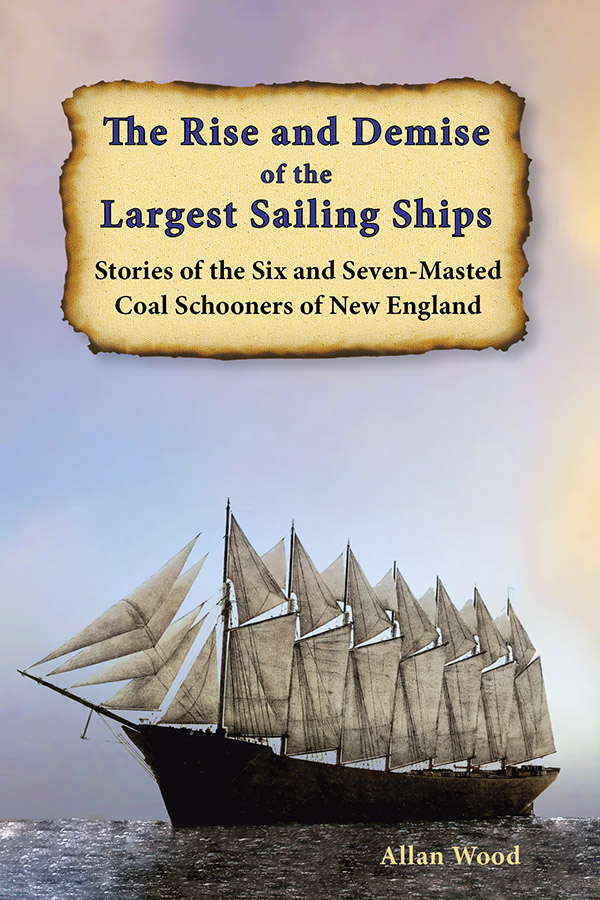
This self-published book is available in paperback, hardcover, and as an eBook for all devices. |
The Rise and Demise of the Largest Sailing Ships: Stories of the Six and Seven-Masted Coal Schooners of New England In the early 1900s, New England shipbuilders constructed the world’s largest sailing ships amid social and political reforms. These giants of sail were the ten original six-masted coal schooners and one colossal seven-masted vessel, built to carry massive quantities of coal and building supplies, and measured longer than a football field! A few of these vessels, when fierce competition for coal arose, would travel up to northern Maine, Calais, and southeastern Canada to transport lumber and coke (used for smelting iron ore) to ports south. |

